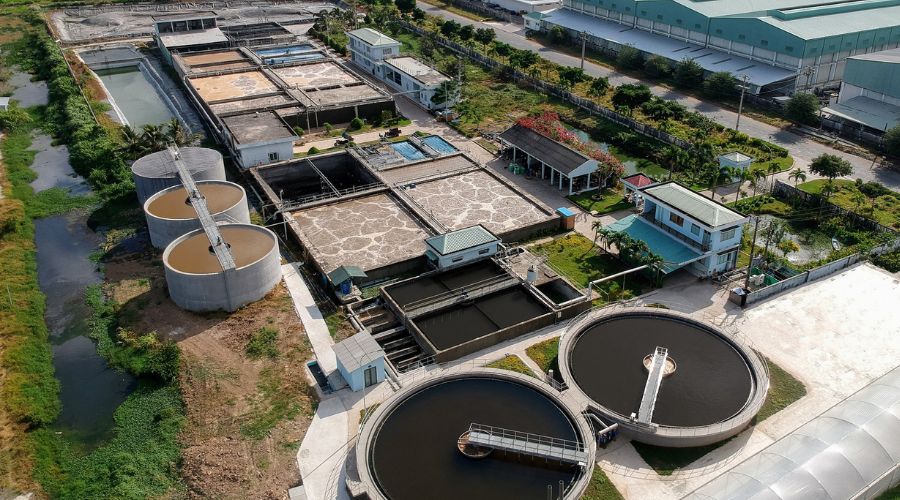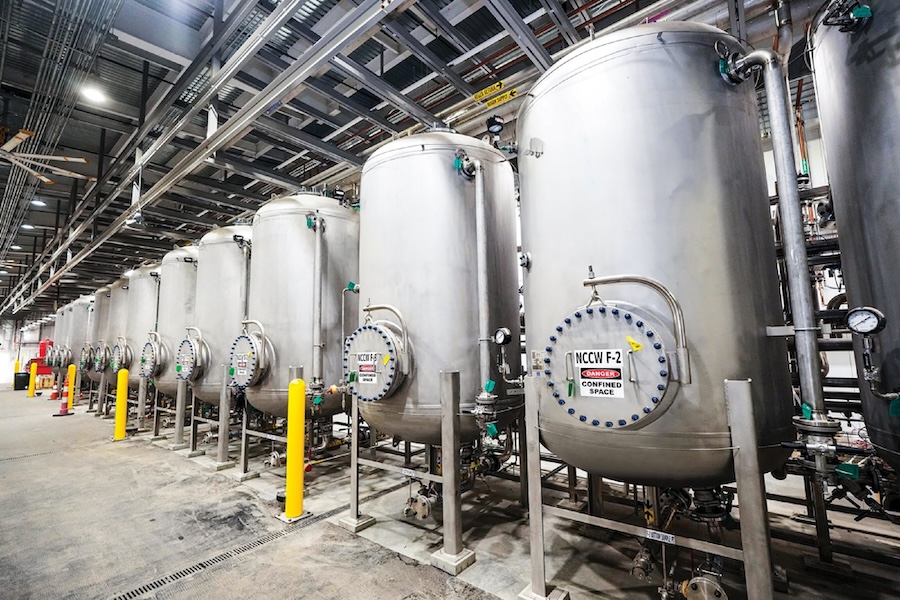Amid increasingly complex pollution pressures and stricter discharge standards, the wastewater treatment industry is being forced to transform: not only to purify but also to extract value from dirty water. Instead of merely removing pollutants, modern solutions focus on utilizing substances in wastewater such as phosphorus, ammonia, etc., for reuse. This trend not only helps reduce costs but also opens up a sustainable development path for the entire industry.
1. Overview of the Wastewater Treatment Industry
Wastewater treatment is one of the key solutions for environmental protection, as untreated wastewater carries bacteria, viruses, heavy metals, and toxic compounds that cause pollution. Applying water treatment technologies not only minimizes the risk of disease transmission but also helps restore natural ecosystems and improve the quality of water for domestic, agricultural, and industrial use.
Currently, the wastewater treatment sector faces numerous challenges. In urban areas and industrial zones, wastewater collection and treatment systems are often inconsistent, leading to untreated discharge into the environment. Moreover, access to treatment technologies is limited due to high investment costs, while community awareness and policy support remain insufficient. In the face of climate change and increasing pollution, there is an urgent need to comprehensively innovate both technology and operational models in wastewater treatment.

Wastewater treatment is an urgent issue to minimize negative impacts on the environment.
2. A New Approach to Wastewater Treatment: Resource Recovery
In the past, wastewater was regarded simply as waste to be discarded. However, environmental scientists and engineers have realized that wastewater contains valuable components such as nitrogen, phosphorus, and organic carbon. These can be reused for purposes like irrigation, industrial cooling, or even clean water production. This new approach paves the way for a circular economy in the environmental sector.
The shift from "wastewater treatment" to "resource recovery from wastewater" is becoming a growing trend. Instead of focusing solely on removing pollutants, systems now aim to extract substances such as phosphorus and biogas from sludge for reuse. This model not only reduces operating costs but also generates economic value from the treatment process and promotes global sustainable development goals.
3. Wastewater Treatment Using Resin Beads
Researchers at Stanford University have developed an advanced filtration resin based on ion-exchange technology, marking a significant breakthrough in wastewater treatment. This new material features a unique porous structure that selectively adsorbs target compounds from water. Thanks to its flexibility and high efficiency, the resin can be reused multiple times, reducing operating costs and being suitable for various treatment systems – from urban to industrial scales.
3.1 Ability to Recover Valuable Compounds like Ammonia and Phosphorus
One of the standout features of this technology is its ability to recover essential nutrients such as ammonia (NH₄⁺) and phosphorus (PO₄³⁻), which are often wasted in traditional wastewater treatment processes. These smart resin beads help retain and concentrate such compounds, which can then be recycled for fertilizer production or industrial applications. This solution not only conserves resources but also contributes to addressing global nutrient scarcity.
3.2 Effective Removal of Pollutants such as PFAS
In addition to resource recovery, the resin technology also shows exceptional effectiveness in removing hazardous pollutants like PFAS – a group of "forever chemicals" that are highly persistent in the environment and can pose serious health risks. With its selective adsorption of specific molecular structures, the resin cleans wastewater efficiently without relying on harsh chemicals or complex processes. This is a sustainable solution aligned with the trend of smart and environmentally friendly wastewater treatment.

Wastewater treatment using resin beads is cost-effective and highly efficient.
Wastewater treatment is no longer just an obligatory task for environmental protection but is becoming an opportunity to cut costs and promote a circular economy. From harnessing ammonia and phosphorus to removing persistent compounds like PFAS, smart resin technology is a clear sign of the transformative potential of this industry in the near future. To realize this potential, there must be close cooperation between policy, technology investment, and public awareness – aiming toward a more modern, efficient, and sustainable wastewater management system.

